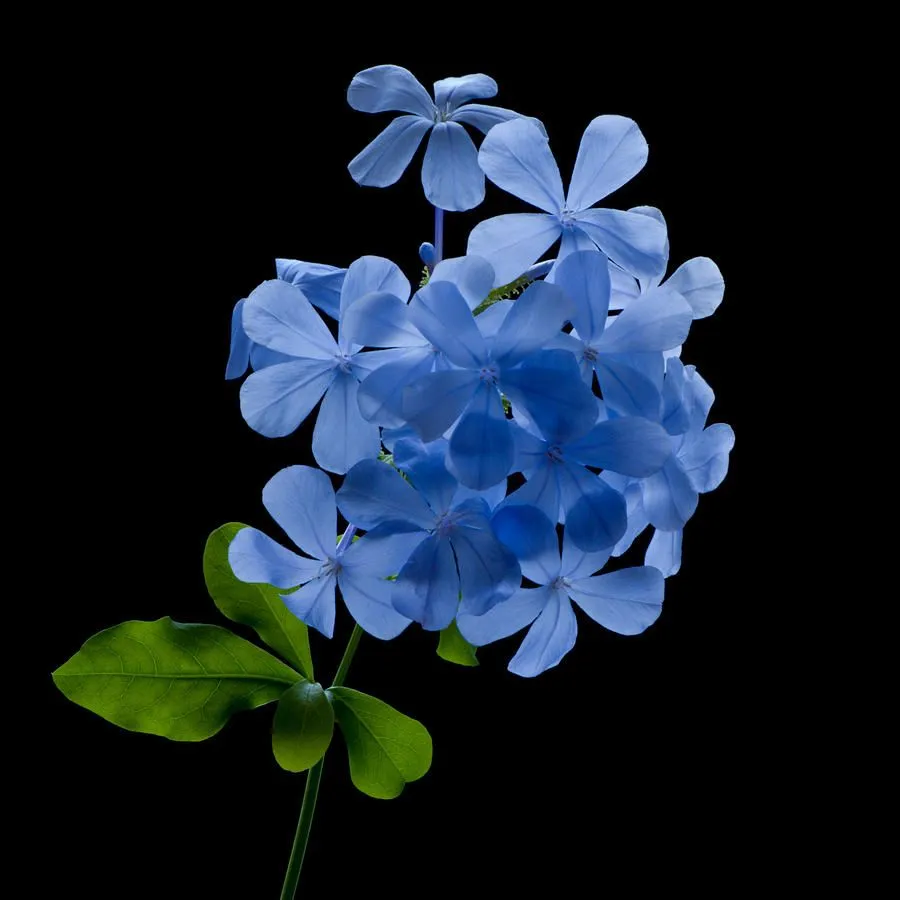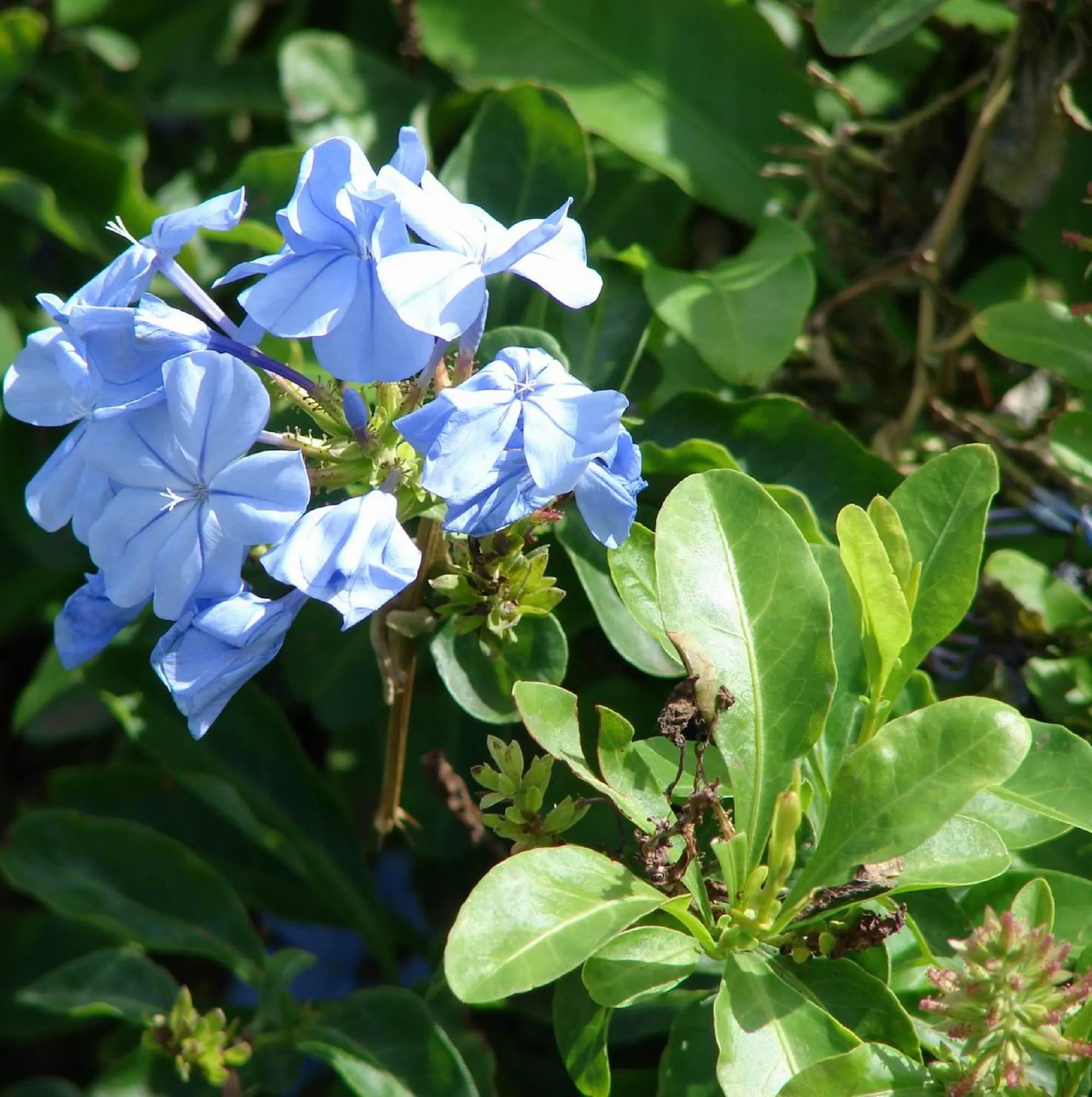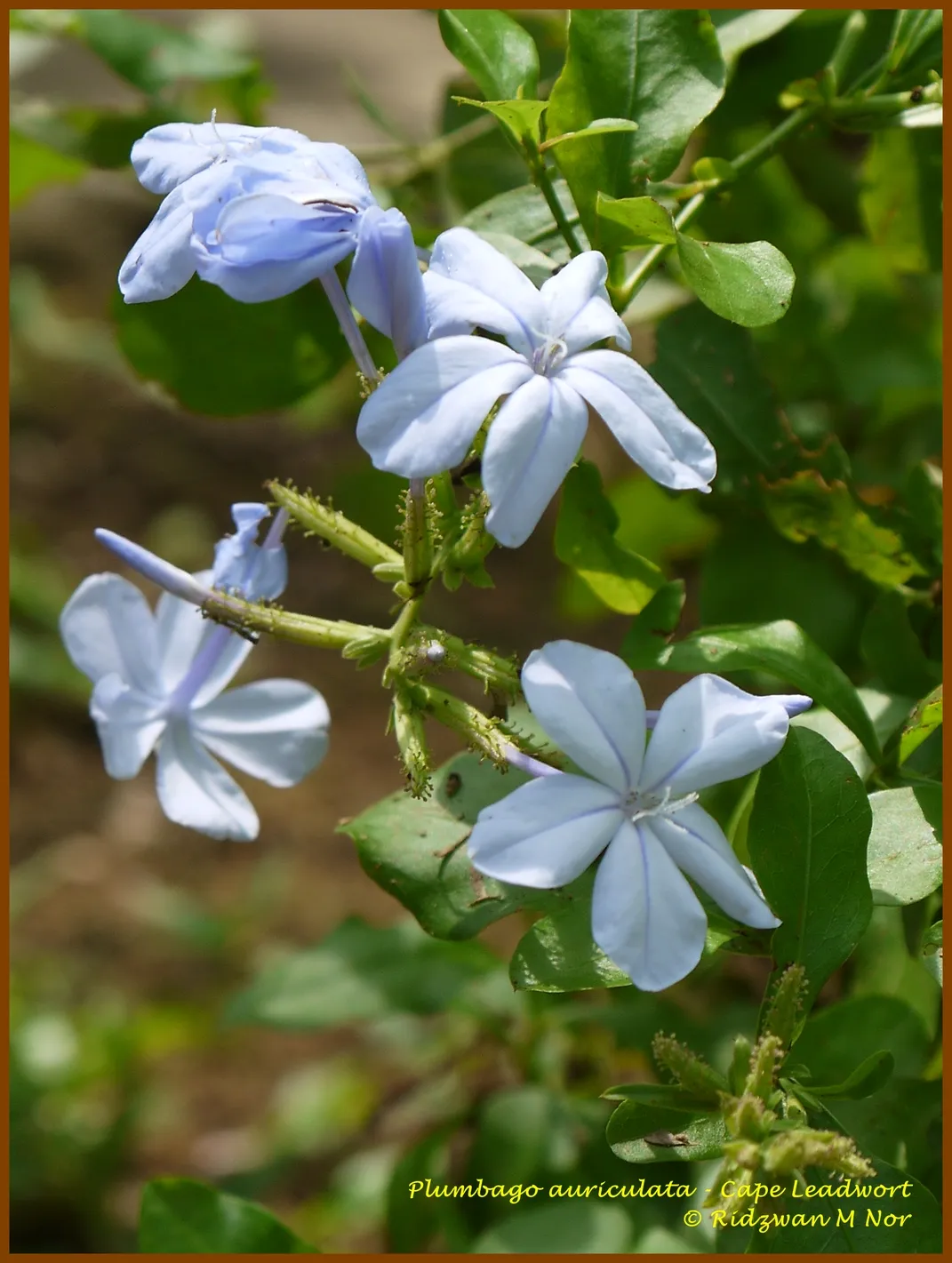Introduction
Flowers are the beautiful creation of nature that can mesmerize anyone with their charm and beauty. They are not only admired for their beauty but also for their medicinal properties. One such flower that has gained popularity for its medicinal value is the Cape Leadwort. Cape Leadwort, also known as Plumbago auriculata, is a flowering plant that belongs to the family Plumbaginaceae. It is native to South Africa and is widely cultivated in other parts of the world for its ornamental value.
Description
Cape Leadwort is a perennial shrub that can grow up to 3 meters tall. It has glossy, dark green leaves that are 5-7 cm long and 2-3 cm wide. The plant produces clusters of small, tubular, light blue or white flowers that are about 1 cm in diameter. The flowers bloom in late summer and autumn and are followed by small, black berries. The plant has a woody stem that can become quite thick over time. It is easy to grow and maintain and can be grown in both full sun and partial shade.
Medicinal Properties
Cape Leadwort has been used for centuries for its medicinal properties. The plant contains several active compounds, including plumbagin, which has been shown to have anti-inflammatory, anti-tumor, and anti-viral properties. The plant is traditionally used to treat a variety of ailments, including arthritis, rheumatism, asthma, bronchitis, and coughs. It is also used to treat skin conditions such as eczema, psoriasis, and dermatitis. Cape Leadwort has been shown to be effective in treating cancer. Plumbagin, the active compound in the plant, has been shown to inhibit the growth of cancer cells and induce apoptosis, or cell death, in cancer cells. The plant is also used to treat digestive issues such as constipation and diarrhea. It is believed to have a laxative effect and can help to regulate bowel movements.
Cultivation
Cape Leadwort is easy to grow and maintain. It can be grown in both full sun and partial shade and prefers well-draining soil. The plant can be propagated by seeds, cuttings, or layering. To propagate the plant by seeds, the seeds should be sown in the spring in a well-draining soil mix. The soil should be kept moist, but not waterlogged, until the seeds germinate. To propagate the plant by cuttings, take a cutting from the plant in the spring or summer. The cutting should be about 10 cm long and should have at least two nodes. Dip the cutting in rooting hormone and plant it in a well-draining soil mix. Keep the soil moist and the cutting should root in about 4-6 weeks. To propagate the plant by layering, select a low-growing branch and bend it down to the ground. Make a small cut in the bark of the branch and bury it in the soil. The branch will root in about 4-6 weeks and can be cut from the parent plant and transplanted.
Uses in Landscaping
Cape Leadwort is a popular ornamental plant that is widely cultivated in gardens and landscapes. The plant is prized for its beautiful flowers and glossy leaves and is often used as a hedge or border plant. The plant can also be trained to grow on a trellis or pergola, creating a beautiful flowering canopy. It can also be grown in containers and used to decorate patios and balconies. Cape Leadwort is a great plant for attracting pollinators such as bees and butterflies to the garden. The plant is also deer-resistant, making it a great choice for gardens in areas where deer are a problem.
Conclusion
Cape Leadwort is a beautiful and versatile plant that has both ornamental and medicinal value. It is easy to grow and maintain and can be used in a variety of ways in the garden and landscape. The plant's medicinal properties make it a valuable addition to any herbal medicine cabinet. It has been shown to be effective in treating a variety of ailments, including cancer, arthritis, and digestive issues. Overall, Cape Leadwort is a great plant to have in any garden or landscape. Its beauty and versatility make it a valuable addition to any outdoor space.
Frequently asked questions about Cape Leadwort wallpapers
What is Cape Leadwort?
Cape Leadwort (Plumbago auriculata) is a flowering plant native to South Africa. It is also known as Cape plumbago or sky flower.
What type of images of Cape Leadwort are available on your website?
We have a collection of 30 high-quality images of Cape Leadwort flowers. These images are available in .jpg, .png, and .webp file formats.
Are the images available for free download?
Yes, all the images of Cape Leadwort flowers are available for free download.
Can I choose the size of the images I want to download?
Yes, you can choose the size of the images you want to download. We offer different sizes for each image, and you can select the width and height that best suits your needs.
What file formats are available for download?
You can download the images in .jpg, .png, and .webp file formats.
How do I download the images?
To download the images, simply click on the download button below the image you want. You will be prompted to select the file format and size you want to download.
Can I use the images for commercial purposes?
Yes, you can use the images for commercial purposes. However, we would appreciate it if you could credit our website as the source of the images.
Do I need to create an account to download the images?
No, you do not need to create an account to download the images. You can download the images for free without any registration.
Are the images optimized for mobile devices?
Yes, our website automatically detects the visitor's mobile screen size and chooses the right size for the visitor. This means that the images are optimized for mobile devices and will load quickly on smartphones and tablets.
What if I have a problem downloading the images?
If you have any problems downloading the images, please contact us using the contact form on our website. We will do our best to assist you.































